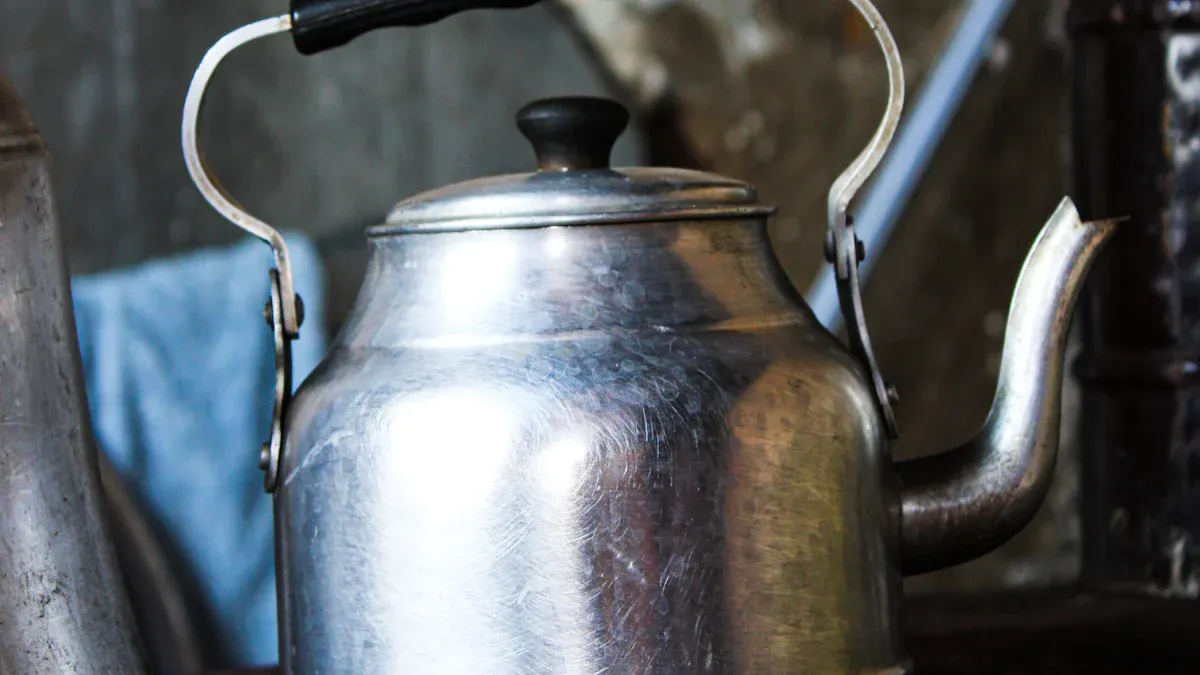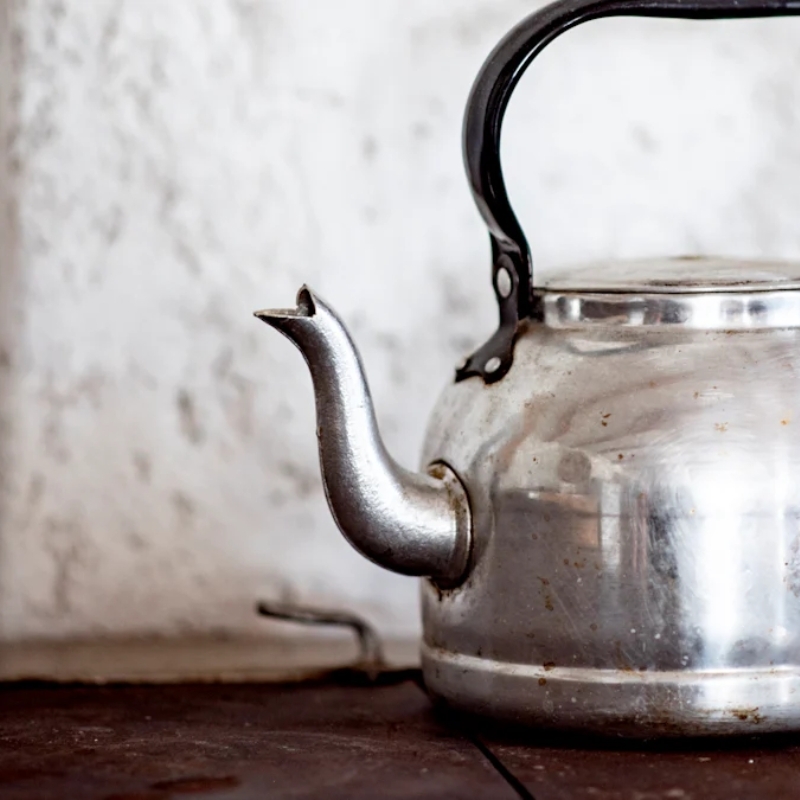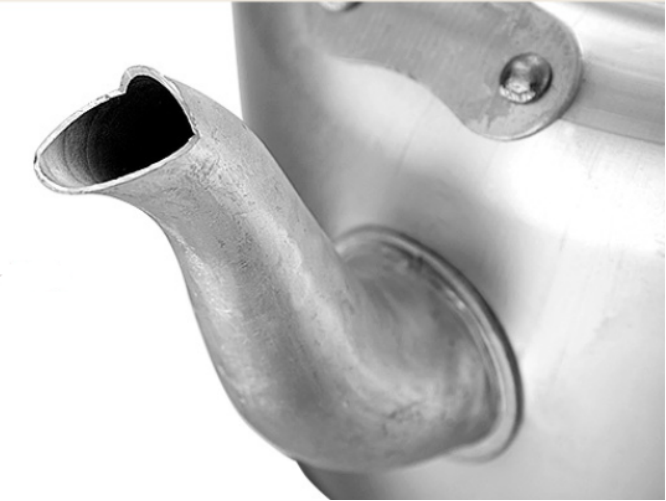Many users seek an aluminum kettle that lasts, looks clean, and remains safe for daily use. Anodizing and hard anodizing both offer strong protection and resist wear, while ordinary polishing mainly improves appearance. Most choose hard anodizing for its exceptional durability and reliable safety in busy kitchens.
Key Takeaways
- Hard anodizing offers the strongest protection for aluminum kettles, making them durable, safe, and easy to clean for daily use.
- Standard anodizing improves kettle durability and safety better than polishing, while polishing mainly enhances appearance but needs frequent care.
- Choosing the right surface depends on your needs: hard anodizing for long-lasting use, anodizing for balanced cost and protection, and polishing for a shiny, classic look.
Anodizing Process for Aluminum Kettle

How Anodizing Works
Anodizing creates a protective layer on the surface of aluminum. The process uses an electrolytic bath. Workers place the aluminum part in an acid solution and pass an electric current through it. This current causes oxygen ions to bond with the aluminum atoms. The result is a hard, durable oxide layer that forms on the metal’s surface.
Anodizing does not add material to the aluminum. Instead, it changes the outer layer of the metal itself. This layer resists corrosion and wear much better than untreated aluminum. The thickness of the oxide layer can vary, depending on the process time and current used.
The anodized surface can also accept dyes. Manufacturers often add color to the oxide layer for decorative purposes. The process does not use harmful chemicals that remain on the product, making it safe for kitchen use.
Application to Aluminum Kettle
Manufacturers use anodizing to improve the performance of an aluminum kettle. The process gives the kettle a harder surface. This surface resists scratches and stains. It also prevents the metal from reacting with acidic or alkaline liquids.
- Anodized kettles last longer than polished ones.
- The surface stays smooth and easy to clean.
- The kettle keeps its appearance over time.
Anodizing also helps keep the kettle safe for boiling water. The oxide layer blocks aluminum from leaching into drinks. Many users choose anodized kettles for their durability and safety.
Hard Anodizing for Aluminum Kettle
How Hard Anodizing Differs from Regular Anodizing
Hard anodizing uses a similar process to standard anodizing but applies higher voltage and lower temperatures. This method creates a much thicker oxide layer on the aluminum surface. The result is a coating that offers greater hardness and better resistance to wear. Manufacturers often choose hard anodizing for products that need to withstand heavy use or harsh conditions.
The hard anodized layer can reach up to 60 microns in thickness. This layer protects the metal from scratches and corrosion. Unlike regular anodizing, hard anodizing gives the surface a darker color, usually gray or black. The process also makes the surface less likely to chip or peel over time.
Note: Hard anodizing does not use toxic chemicals, so it remains safe for kitchenware.
Application to Aluminum Kettle
Manufacturers use hard anodizing to improve the performance of an aluminum kettle. This treatment makes the kettle much more durable than one with a polished or standard anodized finish. The thick oxide layer prevents dents and scratches from daily use. It also keeps the kettle looking new for a longer time.
Many users prefer hard anodized kettles for camping or busy kitchens. The surface resists stains and does not react with boiling water. Cleaning becomes easier because the hard surface does not hold onto residue. Hard anodizing extends the life of the aluminum kettle and ensures safe use for boiling water.
Ordinary Polishing for Aluminum Kettle
How Polishing Is Done
Polishing gives aluminum a shiny and smooth surface. Workers use abrasive materials like sandpaper, polishing wheels, or special compounds. They rub or buff the metal until it reflects light. This process removes small scratches and surface marks. Sometimes, machines help speed up the work and create a more even finish.
Polishing does not add any protective layer to the metal. It only changes the surface by making it smoother and brighter.
Some manufacturers use different grades of abrasives. They start with coarse materials to remove rough spots. Then, they switch to finer abrasives for a mirror-like shine. The process can take time and skill to achieve the best results.
Application to Aluminum Kettle
Manufacturers often polish aluminum kettles to improve their appearance. A polished kettle looks bright and attractive on a kitchen counter. Many people like the classic, shiny look of polished aluminum.
- Polished surfaces feel smooth to the touch.
- The process helps remove minor imperfections from the metal.
- Polishing can make the aluminum kettle stand out in a store display.
However, polishing does not protect the kettle from scratches or stains. The shiny surface can lose its luster with regular use. Users may need to polish the kettle again to keep it looking new.
Advantages and Disadvantages of Anodizing on Aluminum Kettle
Advantages
- Anodizing creates a strong protective layer on the aluminum kettle. This layer resists scratches and corrosion.
- The process makes cleaning easier. Stains and residue do not stick to the surface as easily.
- Anodized surfaces do not react with boiling water or acidic liquids. This feature keeps drinks safe and pure.
- The finish can accept dyes, so manufacturers can offer kettles in different colors.
- Anodizing does not use harmful chemicals that remain on the product. The process keeps the kettle safe for kitchen use.
Tip: Anodized aluminum kettles often last longer than polished ones. Many users choose them for daily use because of their durability.
Disadvantages
- Anodized coatings can wear down over time, especially if users scrub the surface with abrasive pads.
- The process adds cost to the manufacturing of the aluminum kettle. Anodized kettles usually cost more than polished ones.
- Deep scratches or dents can break through the oxide layer. When this happens, the exposed metal may corrode.
- The color of anodized surfaces can fade after years of use or exposure to strong sunlight.
- Repairing damaged anodized surfaces is difficult. Most users cannot restore the original finish at home.
Note: While anodizing improves durability, it does not make the aluminum kettle completely immune to damage.
Advantages and Disadvantages of Hard Anodizing on Aluminum Kettle
Advantages
Hard anodizing gives the aluminum kettle a very tough surface. This process creates a thick oxide layer that protects the metal from scratches and dents. Many users notice that hard anodized kettles last much longer than polished or standard anodized ones. The surface resists stains and does not react with boiling water or acidic drinks. Cleaning becomes easier because food and residue do not stick to the hard surface.
- The kettle keeps its appearance for many years.
- The thick coating prevents metal from leaching into water.
- Hard anodized kettles work well in busy kitchens and outdoor settings.
Note: Hard anodizing also makes the kettle less likely to warp under high heat. This feature helps keep the kettle safe and reliable for daily use.
Disadvantages
Hard anodizing increases the cost of making an aluminum kettle. The process uses more energy and takes longer than regular anodizing or polishing. Some users may find the darker color less attractive than a shiny, polished finish. The thick oxide layer can chip if the kettle receives a strong impact. Repairing a damaged hard anodized surface is difficult and often not possible at home.
- The surface may show marks if scrubbed with abrasive pads.
- Hard anodized kettles usually cost more in stores.
- The finish cannot be restored easily if damaged.
Tip: Users should avoid using metal utensils or harsh cleaners to keep the surface in good condition.
Advantages and Disadvantages of Ordinary Polishing on Aluminum Kettle
Advantages
Ordinary polishing gives an aluminum kettle a bright, mirror-like shine. Many users enjoy the classic look that polished aluminum brings to the kitchen. The process removes small scratches and surface marks, making the kettle feel smooth to the touch. Polished kettles often stand out on store shelves because of their attractive appearance.
- Polishing can make the aluminum kettle look new and clean.
- The process does not involve chemicals, so it remains safe for food contact.
- Polished surfaces feel pleasant and smooth when handled.
Tip: A polished aluminum kettle can add a touch of elegance to any kitchen setting.
Disadvantages
Polished aluminum kettles do not have a protective layer. The shiny surface scratches easily during daily use. Stains and fingerprints show up quickly and can make the kettle look dull. Users may need to polish the kettle often to keep its shine.
- The surface does not resist corrosion or wear.
- Cleaning can become difficult if stains build up.
- The kettle may lose its bright finish over time.
Note: Ordinary polishing improves appearance but does not increase durability or safety for long-term use.
Direct Comparison of Surface Treatments for Aluminum Kettle
Durability
Durability plays a key role in choosing a surface treatment. Hard anodizing creates the thickest and hardest oxide layer. This layer protects the kettle from scratches, dents, and corrosion. Many users notice that hard anodized kettles last for years, even with heavy use. Standard anodizing also improves durability, but the protective layer is thinner. It resists daily wear but may show damage sooner than hard anodized surfaces. Ordinary polishing does not add any protection. The shiny surface scratches easily and loses its luster quickly.
Hard anodized kettles often perform best in busy kitchens or outdoor settings.
Safety
Safety matters when boiling water or making drinks. Hard anodizing and regular anodizing both prevent aluminum from leaching into water. The oxide layer acts as a barrier, keeping drinks pure and safe. These treatments do not use harmful chemicals, so the kettle remains food-safe. Polished aluminum lacks this protective layer. Over time, the metal can react with acidic liquids. This reaction may affect taste and safety.
| Surface Treatment | Prevents Metal Leaching | Food-Safe | Chemical-Free Process |
|---|---|---|---|
| Hard Anodizing | ✅ | ✅ | ✅ |
| Anodizing | ✅ | ✅ | ✅ |
| Ordinary Polishing | ❌ | ✅ | ✅ |
Appearance
Appearance influences many buyers. Polished aluminum shines with a mirror-like finish. This look appeals to those who want a classic or decorative style. Anodized kettles offer a matte or satin finish. Manufacturers can add color during the anodizing process, giving more design options. Hard anodized kettles usually appear darker, often gray or black. Some users prefer this modern, understated look, while others miss the bright shine of polished metal.
Tip: Polished kettles look great when new but may show fingerprints and stains more easily.
Maintenance
Maintenance affects how much time users spend cleaning and caring for their kettle. Hard anodized surfaces resist stains and residue. Cleaning usually requires only a soft sponge and mild soap. Standard anodized kettles also clean easily, but the thinner layer may wear down with harsh scrubbing. Polished aluminum needs frequent cleaning to keep its shine. Scratches, stains, and fingerprints show up quickly. Users may need to polish the kettle often to restore its appearance.
- Hard anodized: Low maintenance, easy to clean
- Anodized: Moderate maintenance, avoid abrasive pads
- Polished: High maintenance, frequent polishing required
Cost
Cost can influence the final decision. Hard anodizing uses more energy and time, so these kettles cost the most. Standard anodized kettles fall in the middle price range. Polished aluminum kettles usually cost the least. Buyers must balance their budget with their needs for durability and safety.
| Surface Treatment | Relative Cost |
|---|---|
| Hard Anodizing | $$$ |
| Anodizing | $$ |
| Ordinary Polishing | $ |
Note: Investing in a higher-quality surface treatment can save money over time by reducing the need for replacements.
Choosing the Best Surface Treatment for Your Aluminum Kettle
For Daily Use
Most families want a kettle that lasts and stays safe. Hard anodizing offers the best choice for daily use. This process creates a thick, tough surface that resists scratches and stains. Users can clean the kettle easily with mild soap and a soft sponge. Hard anodized kettles do not react with water or drinks, so they keep beverages safe. Many people choose this option for busy kitchens because it stands up to frequent use.
Tip: Hard anodized kettles work well for both home and outdoor cooking.
For Premium Appearance
Some buyers value style as much as function. Polished aluminum kettles shine with a mirror-like finish. These kettles look elegant on any kitchen counter. Anodized kettles also offer a premium look, especially when manufacturers add color during the process. A colored anodized surface gives a modern, matte appearance. For those who want a unique design, anodizing allows for more color choices than polishing.
| Surface Treatment | Appearance | Color Options |
|---|---|---|
| Polished | Shiny | Silver Only |
| Anodized | Matte | Multiple |
| Hard Anodized | Dark Matte | Limited |
For Budget Buyers
Price matters for many shoppers. Ordinary polishing costs less than anodizing or hard anodizing. A polished aluminum kettle offers a classic look at a lower price. However, it may need more cleaning and can scratch easily. Buyers who want a balance between cost and durability can choose standard anodizing. This option protects the kettle better than polishing but costs less than hard anodizing.
Anodizing and hard anodizing both improve durability and safety. Hard anodizing offers the best protection for most users. Ordinary polishing gives a shiny look but lacks long-term benefits. For daily use, hard anodizing stands out as the top choice. Users seeking style may prefer polished finishes.
FAQ
What makes hard anodized aluminum kettles more durable?
Hard anodized kettles have a thicker oxide layer. This layer protects against scratches, dents, and corrosion. Many users notice these kettles last longer than polished or standard anodized ones.
Can users safely boil acidic liquids in anodized aluminum kettles?
Yes. The anodized surface prevents aluminum from reacting with acidic liquids. Drinks remain safe and pure. Many manufacturers recommend anodized kettles for this reason.
How often should someone polish a regular aluminum kettle?
Users should polish a regular aluminum kettle whenever the shine fades or stains appear. Frequent polishing helps maintain a bright, attractive finish.
Post time: Jun-23-2025


